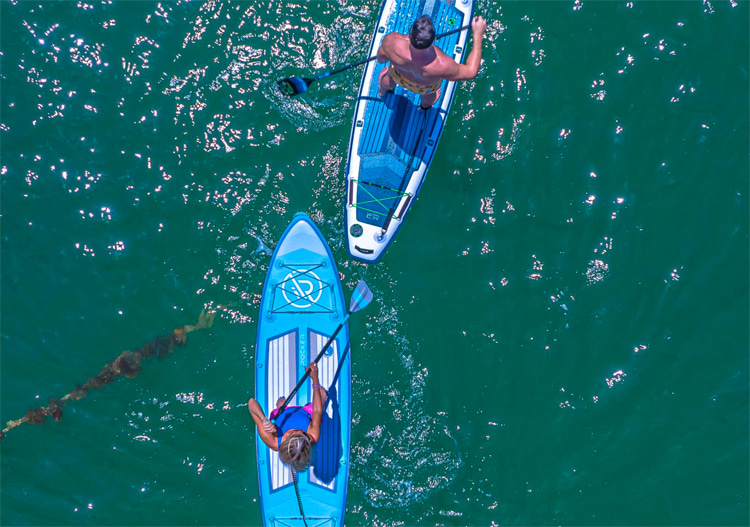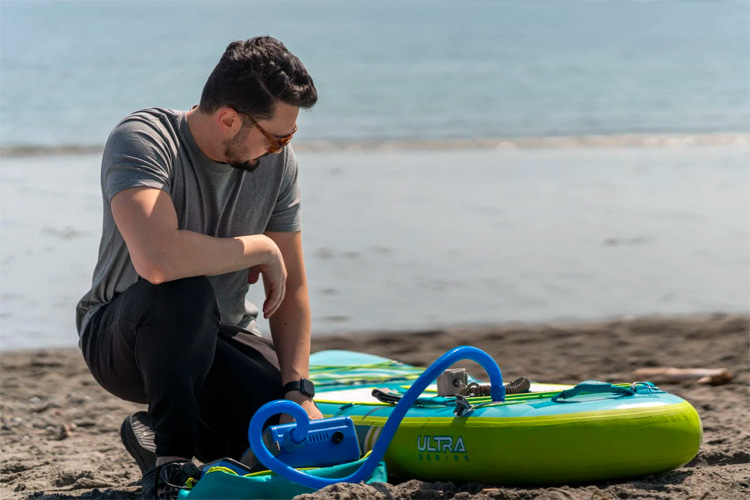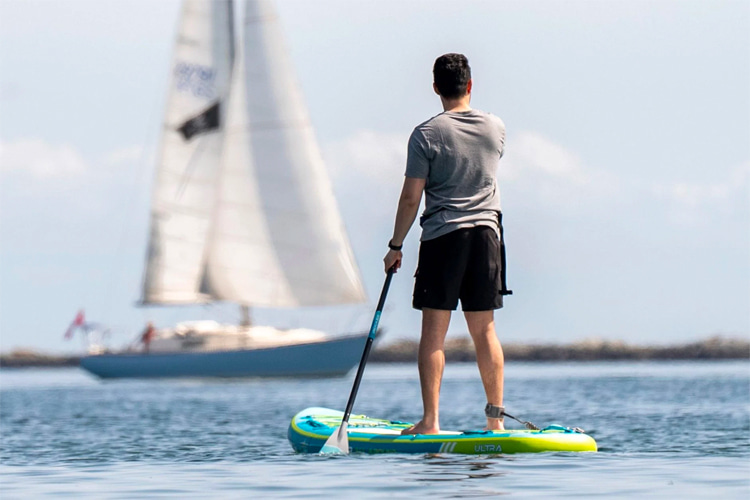You're new to stand-up paddleboarding (SUP) and excited to get out on the water. You have so many adventures ahead of you.
Paddleboarding has quickly become more popular than ever.
From lakes to streams to marinas, there are so many places to ride and explore. In fact, it's a hobby you can enjoy as a leisure activity or an exciting adventure.
So, get a new paddleboard for your summer vacation and enjoy more time out on the water, doing what you love.
But first, you have to learn the basics of SUP. After all, the basics give you the foundational knowledge you need to succeed.
With these seven tips, you'll go from a paddleboarding newbie to a stand-up paddling expert in no time.

Get a Feel of Your Paddleboard on Dry Land
Find a safe spot on land where your inflatable paddle board won't get damaged (or put down a board mat) and simply get used to standing on it.
Get a feel for your foot placement.
While it's a different experience than being on the water, it can help you find the basic techniques that work for you, like keeping your feet spread apart for a wide base and your knees slightly bent.
Be Ready to Fall in the Water
It's inevitable - everyone falls into the water.
Since paddleboarding is a water sport, you'll want strong swimming skills before you go paddleboarding.
Even if you can check that box, it's always a great idea to wear a life jacket as you're learning the paddleboarding basics.
One way to prepare for those falls is to become comfortable with the feeling of losing your balance and hopping off your board into the water.
If you fall intentionally a few times at the start, it will be less of a shock when it happens as you continue to learn.

Kick Off From a Beach or Shallow Incline
As you get ready to paddleboard away from shore, start at a safe spot like a beach.
This way, you can climb onto your board with relative ease.
Skip the dock or "walk" onto your paddle board. It can be difficult to find your footing when you step on the board one foot at a time.
Instead, climb or hop onto your board from the water and start finding your balance.
Practice Getting On and Off the Board in the Water
It can seem tough at first, but with a little practice, you'll be getting on your blow-up paddle board with ease.
In the water, practice sliding off your board into the water. Then, practice gripping the board on both sides and pulling yourself back up.
Kick your feet in an outward motion to propel yourself forward onto the board and pull yourself up with your arms.
Start Low and Work Your Way Up
Keep your center of gravity low when you climb onto your paddle board and get a feel for the board on the water.
You can straddle the board with your legs hanging over either side.
You might not be able to control where the board goes quite so easily this way, but you'll be super stable.
Or you can opt for finding a comfortable kneeling posture.
As you get used to your board, you can stand up as often as you like to build your confidence.
Relax and Let the Water Be Your Friend
Part of balancing on the water means relaxing your legs and staying active through your core.
By relaxing your legs, you can better respond to changes in water or wind.
When water gets choppy, having stiff legs will likely mean you end up in the water.
A relaxed yet attentive posture can help you shift your center of balance, so you stay on the board.
Get Your Stroke Down
This final basic tip is all about paddle control. And again, practice makes perfect.
Gliding through the water is all about long, slow strokes that run parallel to your board.
The face of the paddle should be perpendicular to the board. Turn or twist it in the water to maneuver the board in the direction you want to go.
Patience is key when learning to paddle.
Your arms may get tired as you practice those long, slow strokes, but you'll find your groove with time.
Words by iRocker | Inflatable Paddle Boards and Solid SUPs | www.irockersup.com
